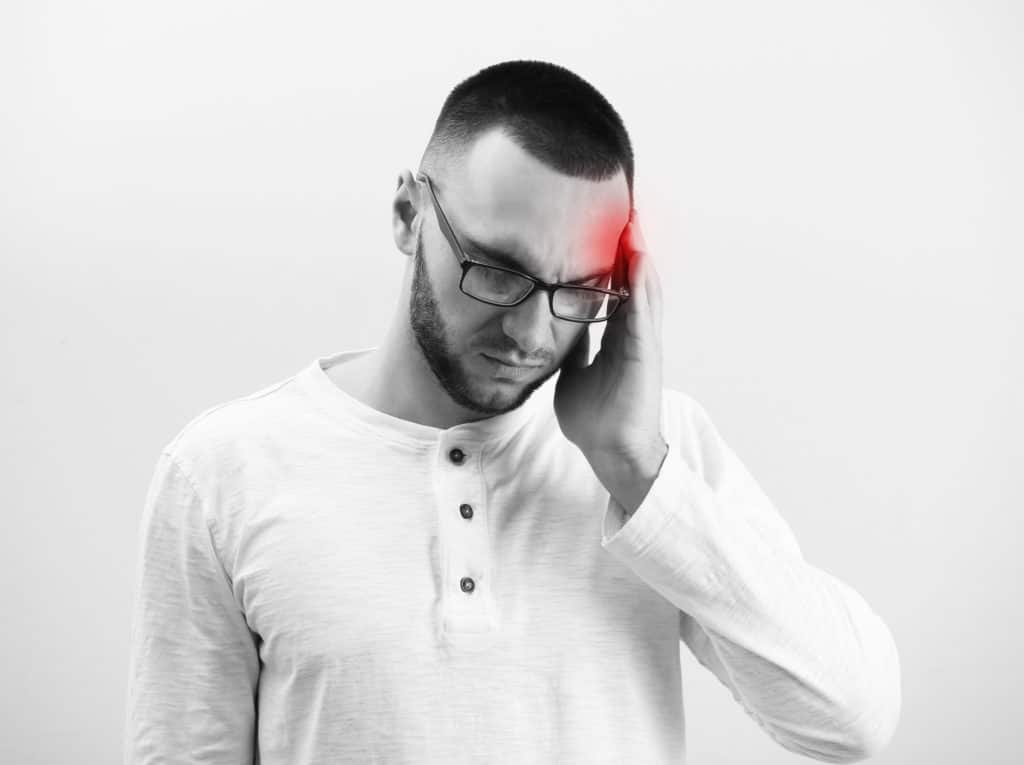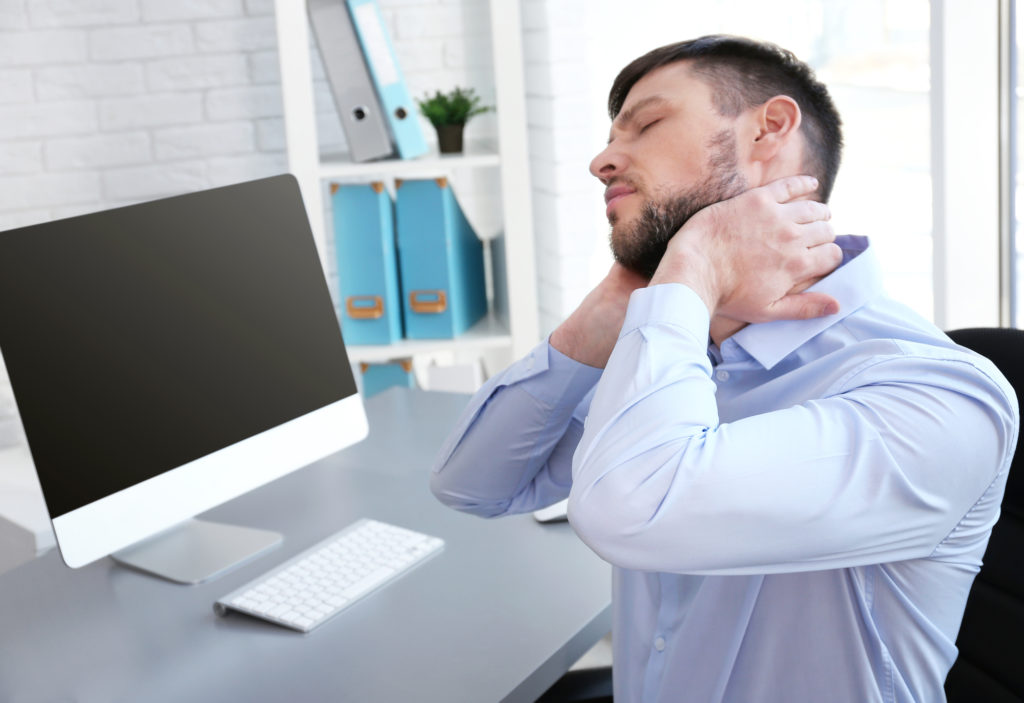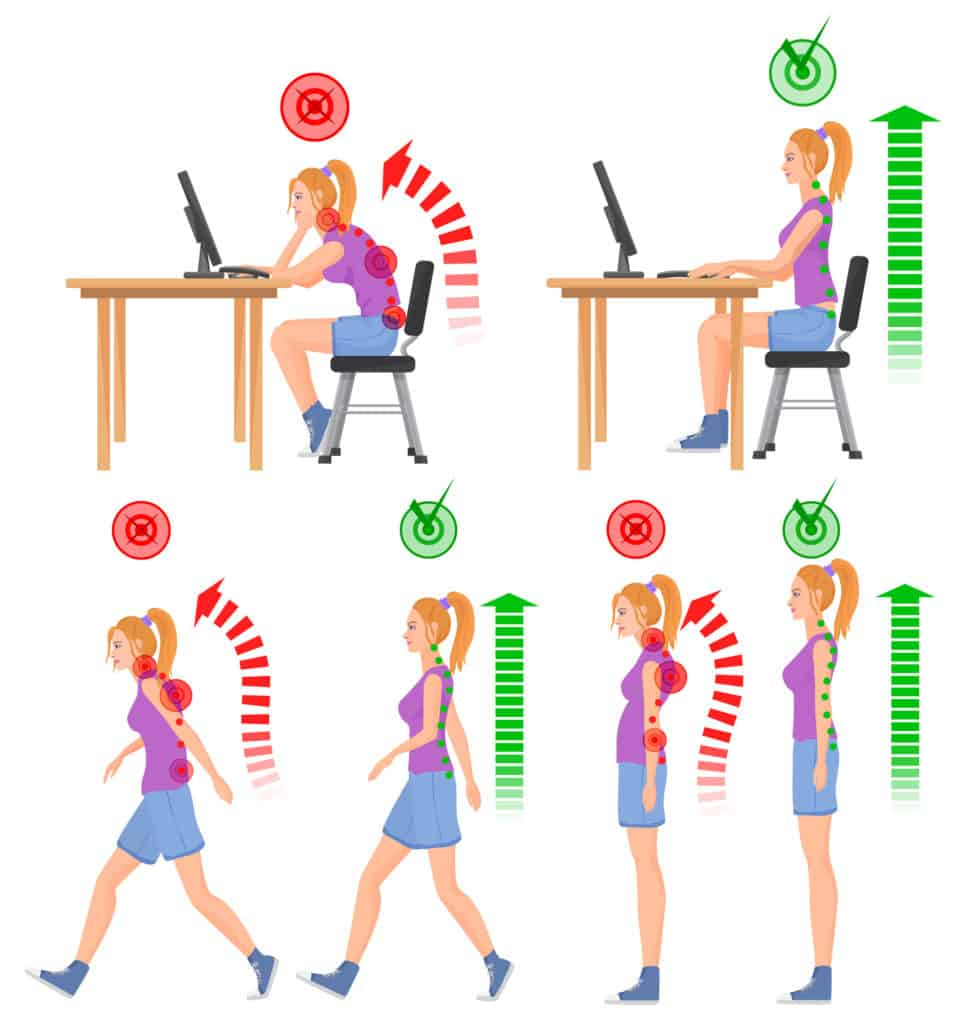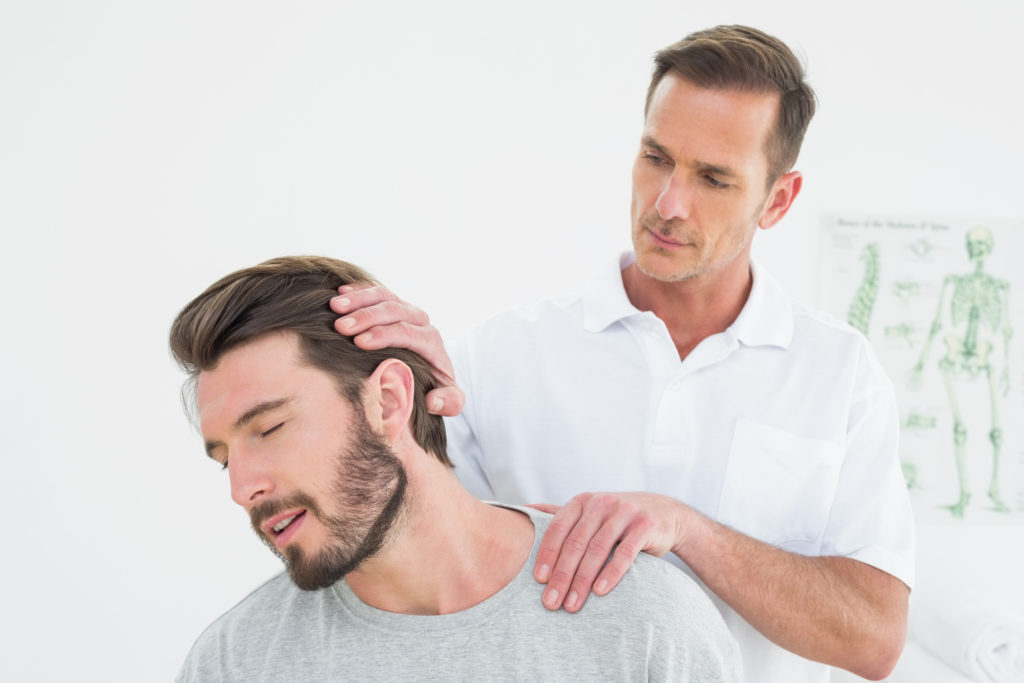Do you remember the number of times your parents, teachers, or grandparents corrected your posture when you were young?
For example, how often did they say, “Stop slouching and stand up straight”? Too many to mention.
It turns out they were right because having poor posture can lead to many medical issues, including headaches and migraines.
Why? Because maintaining a poor posture or slouching increases the pressure on the head and neck muscles, leading to neck pain, headaches, and many other medical complaints.
Poor posture is one of the leading causes of health issues, especially as we age. It can cause pain in the lower back, knees, hips, and neck.
It also causes the spine to compress, leading to herniated spinal disks.
But another common issue we face and a significant contributor to poor posture and neck pain is the forward neck posture we adopt daily, which is due to our excessive use of smartphones and laptop computers.
There are several ways to improve your posture.
Doing some simple exercises every day can make a big difference. Avoiding high heels, maintaining a healthy weight, and using an ergonomic chair are also important things to keep in mind.
But if you are experiencing neck pain, you must consult a physical therapist to get a proper diagnosis. Don’t ignore it.
We can recommend the best exercises for you, correct your postural alignment, and help prevent neck pain in the future.
More Blogs From Manual Physical Therapy & Concierge Services
- Headache Remedies: How To Get Long-Term Relief
- Is Your Body Capable Of A Perfect Golf Swing?
- Can Drinking Water Every Day Reduce Pain?
Why You Should Always Maintain A Good Posture

It’s self-explanatory. However, it’s not always easy to put into practice.
To motivate you into making it a habit, here are the top reasons why you should put extra effort into your posture:
Neck Or Back Issues Are Caused By Poor Posture
Many people that suffer from chronic back pain do so because of not having the proper posture. Maintaining a poor posture over time damages your spinal disks, nerves, muscles, and connective tissues.
Not having a neutral stance and good body alignment leads to the muscles on the side you tilt strengthening and the muscles on the opposite side weakening and elongating.
As you can imagine, this imbalance leads to injury and pain. These injuries and imbalances happen due to repetitive movements, mainly through activities and occupations where you perform the same movements for extended periods.
In the process of the body attempting to compensate for the imbalances, it leads to misalignment or instability of the joints.
It can worsen as the day progresses or get more intense at a particular part of the day. Pain due to poor posture can transfer from the neck to the upper and lower back.
Arthritis
The onset of arthritis and poor posture are closely linked.
For example, in the early stages of the condition, poor posture is one of the contributing factors responsible for neck osteoarthritis.
Similarly, if you suffer from the condition, you’re more likely to develop a slouched posture, which worsens the condition over time.
You Can Aggravate a TMJ Disorder
The TMJ (temporomandibular joint) links the temporal skull bones (in front of each ear) with the jaw.
If there is inflammation in the joint, it can cause a popping sound in the jaw, leading to headaches and neck and jaw pain.
But one of the main reasons for TMJ to develop in the first place is holding an incorrect posture.
Keeping the head in a forward posture is the primary cause, as it leads to an increase in stress on the muscles of the jaw.
Tension headaches
Most of us have experienced a dull, tight pressure in our forehead with tightness in the neck and back of the head at some time.
These are known as stress headaches that occur regularly in adults.
The good news is that we can prevent these types of headaches.
Most headaches result from poor posture, and improving how we stand or sit posture-wise can reduce the frequency of these headaches.

Slumping Can Cause Migraines
If you suffer from migraines and you’re already trying to avoid triggers.
From renouncing your favorite food items to avoiding wine, you might want to consider whether your posture may be the actual trigger.
Studies indicate that this major trigger of migraines may have been overlooked in the research.
For example, keeping the head forward for prolonged periods when working on a computer or a mobile phone can cause severe migraines that can remain for days.
To help prevent headaches, it’s a good idea whenever possible to move and change your position while working.
This movement can help reduce the risk of headaches or neck pain.
Also, if possible, take a break from looking at screens every 20 minutes and try to blink frequently to keep your eyes from getting dry.
What Causes Neck Pain?

Most cases of neck pain are directly and indirectly linked to poor posture, but more specifically, they’re caused by:
Muscle Spasm
Many people experience a “crick in the neck,” also medically referred to as a muscle spasm, at some point in their lives.
Its symptoms include pain and stiffness due to tight muscles on any side of the neck. It can be excruciating and last several days, primarily caused by poor posture.
Physical therapy helps to increase the flexibility of the muscles that spasm and helps to relieve inflammation and pain.
However, maintaining the proper posture is the only option to ensure it does not reoccur.
Pinched Nerve
Remaining in an incorrect posture for extended periods can also cause neck pain due to a pinched nerve.
Its symptoms are tingling, numbness, or burning sensations due to a pinching movement of the vertebrae and skull that entraps nerve tissue.
Another cause can be suffering from a herniated disk that causes pressure build-up on nerve endings.
Postural Kyphosis Brought On By Neck Pain
Characterized by an excessive rounding of the upper back, the head appears to protrude forward. It is also referred to as Dowager’s hump.
The pain associated with this condition can be debilitating, making it hard to do routine activities like combing your hair or even sitting up from a lying position.
How To Prevent Neck Pain

If you don’t address posture issues, the disks between your vertebrae become thinner and less spongy. With age and neglect, they may even shrink or rupture.
All of this can lead to the bones rubbing against each other, causing inflammation and pain in the neck and lower back.
While some of these effects might not seem serious, it is crucial to understand that they can profoundly impact your quality of life.
In addition, neck pain and back problems have a knock-on effect on the rest of our bodies and general health.
For example, we may have digestive and circulation problems due to poor posture and neck issues.
So, the next time you find yourself hunched over your workstation or with your head tilted to one side while looking at your phone, take a break, sit up straight, and give your neck and back the attention they deserve.
Easy Ways To Improve Your Posture And Relieve Neck Pain

Correct and uncorrect bad sitting and walking position. Walking woman. Sitting woman. Back pain feeling and spinal injuries
Do you slouch for hours when using your laptop or mobile phone?
Does your work chair give your back adequate support?
Is your computer monitor positioned at the right height?
These are all critical questions to ask if you want to prevent neck pain.
If the answer is no to any of the questions, and you frequently experience neck pain and headaches, you need to change your posture.
Here are our top recommendations to improve your posture and prevent neck pain:
- Set up your laptop screen or computer monitor at the right height, so you do not need to look down at the screen.
- Practice exercises for the chin and neck in all four different directions.
- Always sit upright, keeping your chin at a 45-degree angle from your chest, and maintain the proper posture.
- Get an ergonomically designed chair that correctly supports the thoracic cage and the lumbar spine.
- Do not maintain a fixed posture for long durations and keep changing position.
- Get up and move around every 30 minutes to keep the blood flowing.
- While sitting down, ensure that your feet are resting on the ground and not dangling in the air.
- Choose a pillow that can maintain the natural alignment of your spine when you sleep.
- Never grind the teeth or clench the jaw and keep the mouth in the proper alignment. If you can’t do this naturally, ask your dentist to create a mouth guard or retainer.
- Hydrate yourself frequently, as dehydration can cause your joints to seize up.
- If you must look up, bend your neck instead of trying to crane your neck upwards.
- Consult a physical therapist if you have persistent neck pain and a headache for more than 48 hours.

You might be suffering now. The good news is that most headaches and neck pain brought on by poor posture can be reversed and prevented with simple steps, as detailed above.
But if your pain has become chronic or you want to stop the pain from worsening, physical therapy helps you to regain balance and strengthen the back, neck, and shoulder muscles to improve your natural posture.
We help you with a tailor-made treatment program for your specific symptoms and educate you on how to exercise to maintain good postural alignment.
Click here to book a FREE Discovery Visit where you will leave knowing exactly what is causing your pain.
You can get also get our FREE guide “7 Simple Ways To Stop Daily Debilitating Neck Pain”.
Our team of specialist Physical Therapists look forward to welcoming you into our clinic.


